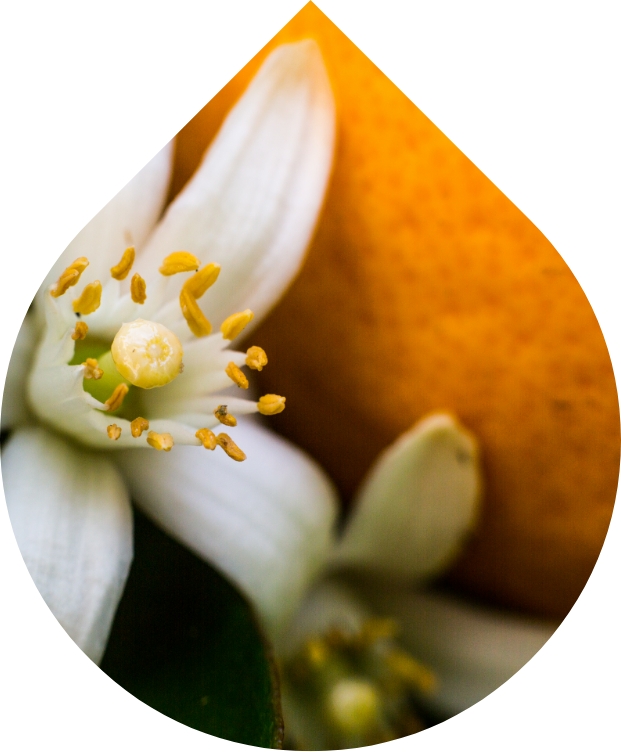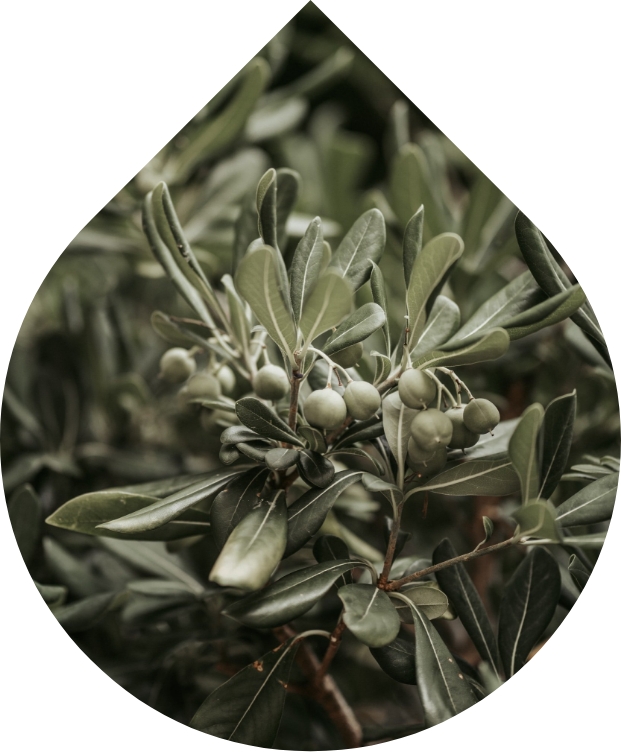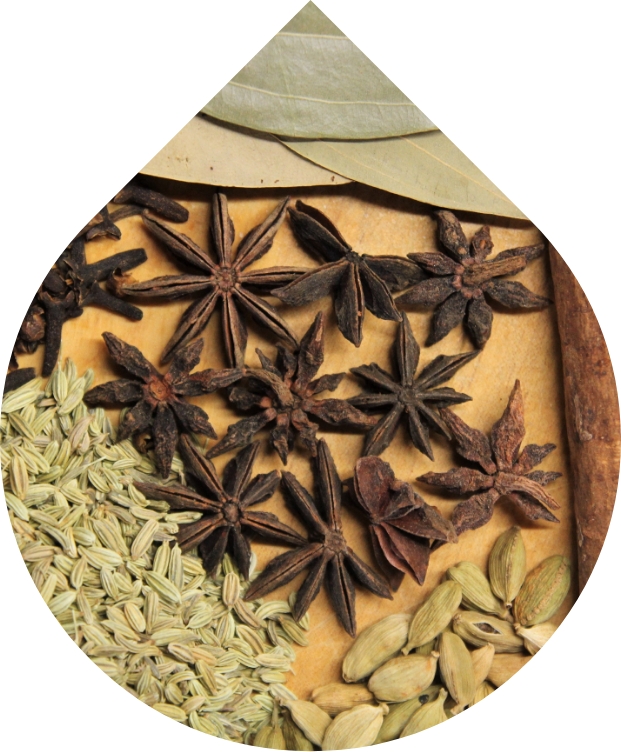Essential oils
and aromatic synergies
Essential oils are the heart of the Pyrenessences Analyses laboratory activity.
An essential oil is most often obtained by steam distillation of a raw material of vegetable origin, or by mechanical processes in the case of citrus fruits. The term “aromatic synergy” refers to a mixture of essential oils.
Some essential oils are standardized (ISO, AFNOR); these standards indicate thresholds that allow the laboratory to rule on the conformity of your samples concerning the chromatographic profiles and certain physical characteristics. Thanks to a regular documentary oversight, we always have the ISO monographs in force. In addition, internal specifications based on the laboratory’s experience have been established for most non-standardized essential oils, and often allow us to comment on your chromatographic profiles.
The analytical services offered by the laboratory Pyrenessences Analyses on essential oils and synergies:
Chromatographic profile
Essential oils are complex hydrophobic mixtures whose composition can be determined by gas chromatography according to the ISO 11024 standard. Two types of analysis are offered:
Classic analysis
Table with every identified compounds
Simple analysis
Table presenting up to 20 compounds: characteristic or standard molecules, and molecules over 1%
Specific gravity
Ratio between the density of the sample and that of pure water at a given temperature.
Refractive index
Characteristic index of the behavior of light in the sample.
Optical rotation
Property that some samples have to rotate the plane of polarization of the light passing through them – related to the possible presence of chiral molecules.
Miscibility with ethanol
Evaluation of the behavior of the sample in more or less diluted ethanol.
Flash point
The minimum temperature at which vapors emitted from the sample will deflagrate upon contact with a flame or hot spot – for example, when transporting a material, this measurement may be necessary.
Peroxide value
The peroxide value expresses the amount of oxygen chemically bound to a substance in the form of peroxides and thus makes it possible to evaluate its oxidation state.
Acid value
The acid value expresses the amount of potassium hydroxide required to neutralize the free acids in a sample.
Ester value
The ester value expresses the amount of potassium hydroxide required to neutralize the acids released by the hydrolysis of the esters in a sample.
Multi-residue analysis of pesticides
The laboratory proposes a multi-residue analysis of pesticides in essential oils, method for which it is COFRAC accredited (the tests under accreditation concern the molecules indicated by an asterisk in certain types of essential oils – full scope available on www.cofrac.fr).
List of target molecules:
Alachlor*
Aldrine*
Atrazine*
Azinphos Ethyl-
Azinphos Methyl-
Benalaxyl
Bifenthrine*
Bitertanols
Bromophos Ethyl-*
Bromophos Methyl-*
Bromopropylate*
Carbofuran
Chlordane cis-*
Chlordane trans-*
Chlorfenvinphos*
Chlorobenzilate*
Chlorothalonil
Chlorpropham*
Chlorpyriphos Ethyl-*
Chlorpyriphos Methyl-*
Chlorthal Dimethyl-*
Clomazone*
Coumaphos
Cyfluthrines
Cyhalothrine λ-
Cypermethrines
DDD o,p’-*
DDD p,p’- + DDT o,p’-
DDE o,p’-*
DDE p,p’-*
DDT p,p’-*
Deltamethrines
Diazinon*
Dichlofenthion*
Dichlofluanide*
Diclofop Methyl-*
Diethofencarb*
Difenoconazols
Diflufenican*
Dimethoate
Diphenylamine
Endosulfan α-*
Endosulfan β-
Endosulfan sulfate*
Endrine*
Ethion*
Ethofumesate*
Ethoprophos*
Etridiazole*
Etrimphos*
Fenamiphos
Fenarimol*
Fenchlorphos*
Fenoxycarb*
Fenpropathrine*
Fenpropimorphe*
Fensulfothion*
Fenthion
Fenvalerates
Fluazifop p-Butyl-*
Flucythrinates
Flusilazole*
Flutolanil*
Flutriafol*
Fonofos*
HCH α-*
HCH β- + Lindane
HCH δ-*
Heptachlore*
Heptachlor epoxide*
Hexachlorobenzene*
Hexaconazole*
Iprodione
Malaoxon*
Malathion*
Mecarbam*
Metalaxyl*
Metazachlor*
Methacrifos*
Methidathion
Methiocarb
Methoxychlore
Metolachlor*
Mirex*
Monalide*
Monocrotophos
Myclobutanil*
Napropamide*
Omethoate
o-Phenylphenol*
Oxadiazon*
Oxadixyl
Penconazole*
Pentachloroaniline
Pentachloroanisole*
Permethrines*
Phosalone
Phosmet
Piperonyl butoxide*
Pirimicarb*
Pirimiphos Ethyl-*
Pirimiphos Methyl-*
Prochloraz
Procymidone*
Profenophos*
Propiconazols
Propyzamide*
Prothiofos*
Pyridaben
Pyridaphenthion
Pyrimethanil*
Quinalphos
Quizalofop Ethyl-
S421*
Sebuthylazine*
Tebuconazole
Terbufos
Terbuthylazine*
Tetradifon*
Tetramethrines
Tolclofos Methyl-*
Tolylfluanid*
Triadimefon
Triadimenol
Triazophos
Vinclozoline*
Search for traces of phthalates
Essential oils that have been in contact with certain materials can sometimes contain traces of phthalates, such that it may be worth looking for them.
List of target molecules (subject to feasibility):
Di-Methyl-Phthalate DMP
Di-Ethyl-Phthalate DEP
Di-Iso-Butyl-Phthalate DIBP
Di-Butyl-Phthalate DBP
Di-Pentyl-Phthalate DnPP
Butyl-Benzyl-Phthalate BBP
Di-CycloHexyl-Phthalate DCHP
Di-Ethyl-Hexyl-Phthalate DEHP
Di-n-Octyl-Phthalate DnOP
Chiral analysis
It can sometimes be interesting to determine the enantiomeric distribution of chiral molecules present in essential oils. Indeed, in nature, one of the two enantiomers is generally dominant, and the expertise of the laboratory helps define thresholds which can highlight certain adulterations.
List of analyzed molecules:
Borneol
Carvone
Citronellal
Citronellol
Limonene
Linalol
Linalyl acetate
Menthol
Menthyl acetate
Pinene α-
Pinene β-
Rose oxide cis-
Rose oxide trans-
Sabinene
Terpinen-4-ol
Terpineol α-
Furocoumarin content in citrus essential oils
Furocoumarins, photosensitizing molecules, are naturally present in Citrus essential oils (Orange, Lemon, Mandarin, Bergamot, Grapefruit …) and are sometimes removed by rectification.
List of target molecules:
8-Geranyloxypsoralen
Angelicin
Bergamottin
Bergapten
Byakangelicin
Byakangelicol
Epoxybergamottin
Heraclenin
Herniarin
Imperatorin
Isoimperatorin
Isopimpinellin
Oxypeucedanin (& -hydrate)
Phellopterin
Psoralen
Xanthotoxin





